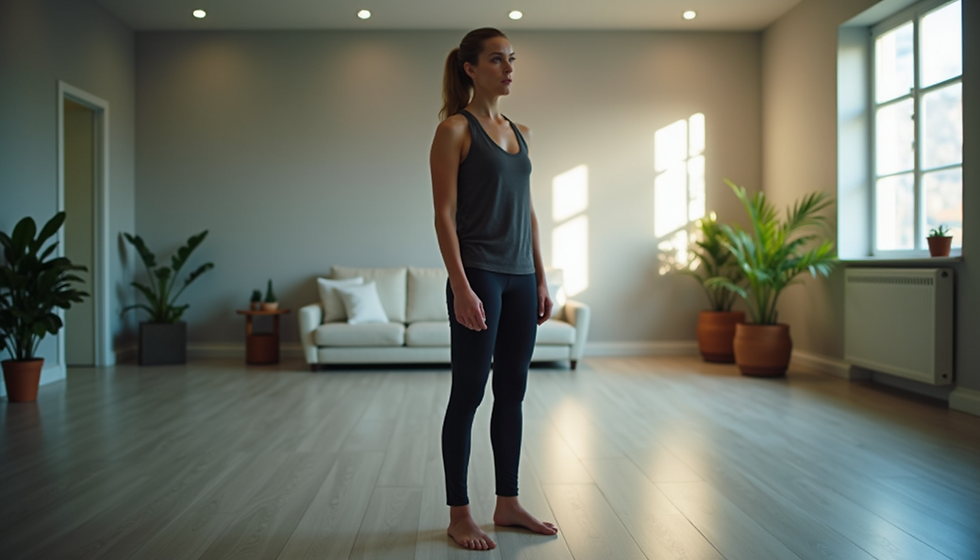Unraveling the Mysteries of Coccyx Pain and the Role of Osteopathy in Relief
- claireosteocare
- May 25
- 4 min read
Coccyx pain, often called coccydynia, affects many people yet remains a topic that is rarely discussed. The coccyx, or tailbone, is a small bone at the base of the spine. While it may seem minor, it plays a key role in supporting your body as you sit and move and also enables your pelvic floor muscles to function. Understanding what causes coccyx pain is vital for finding effective relief, and osteopathy may provide an excellent pathway to comfort.
Understanding Coccyx Pain
Coccyx pain can arise from several sources. Identifying these causes is essential for effective treatment.
The primary contributors to coccyx pain include trauma, prolonged sitting, and various medical conditions.
Trauma: Injuries directly impacting the coccyx can cause significant pain. For example, a fall onto a hard surface or a long labor during childbirth can strain this area. Research indicates that about 30% of coccydynia cases are related to traumatic incidents.
Prolonged Sitting: People who sit for long periods, like office workers, truck drivers and cyclists, often experience coccyx pain due to continuous pressure. Studies show that 60% of individuals with sedentary jobs report tailbone discomfort.
Medical Conditions: Infections, tumors, or inflammatory diseases, such as coccygodynia or a pilonidal cyst, can also lead to this pain. Conditions like these might be less common but are important to consider.
Recognizing these causes can help you understand your specific pain and pursue the appropriate treatment.
Symptoms of Coccydynia
Symptoms of coccyx pain can differ greatly among individuals.
Many may feel sharp pain or a dull ache that intensifies while sitting or when standing up from a seated position. Activities like getting in and out of a car or even engaging in tasks like riding a bicycle can aggravate the discomfort. It's not uncommon for people to also notice tenderness around the coccyx area, making basic movements uncomfortable.
Keeping track of these symptoms is crucial for receiving the right care and treatment.
Diagnosing Coccyx Pain
Proper diagnosis is essential before starting any treatment.
A healthcare provider will likely perform a thorough physical examination and may suggest imaging studies, such as X-rays or MRIs, to identify the cause of the coccyx pain. Approximately 15% of people experiencing chronic coccyx pain require imaging to diagnose underlying issues. This step is key to forming an effective treatment plan.
The Role of Osteopathy in Relief
Osteopathy focuses on treating musculoskeletal problems through hands-on therapy and a holistic approach.
How Osteopathy Works for Coccyx Pain
Osteopathic treatment for coccyx pain employs various techniques, including:
Manual Therapy: This hands-on technique aims to boost mobility and reduce pain by manipulating muscles and joints. Many patients experience a 30% reduction in pain after just a few sessions.
Soft Tissue Techniques: Gentle manipulation of surrounding muscles helps relieve tension, improve blood flow, and promote healing in the coccyx area.
Postural Education: Osteopaths emphasize proper posture to decrease strain on the coccyx. Simple adjustments to sitting habits can lead to significant reductions in pain over time.
Exercise and Rehabilitation: Tailored exercise programs strengthen muscles supporting the pelvis and lower back, cutting down on the likelihood of recurring pain. Studies show that patients who engage in these exercises report improved comfort levels by up to 40%.
Benefits of Osteopathy for Coccydynia
Osteopathy offers various benefits beyond just pain relief.
Holistic Care: This approach treats the entire body, targeting not only the symptoms but also improving overall health.
Improved Functionality: By enhancing movement and function in the affected area, osteopathy can lead to better mobility in daily activities.
Long-term Relief: Patients often enjoy lasting results, as treatment not only addresses immediate discomfort but also works on underlying issues contributing to pain. Even when symptoms have been present for many years.
When to Seek Professional Help
If coccyx pain continues or worsens, it's vital to reach out to a healthcare professional.
Chronic pain can deeply affect daily life, making early intervention crucial. Engaging with a healthcare provider early on helps speed recovery and minimizes complications. Consider discussing your options, including osteopathy.
Self-Care Tips for Coccyx Pain Management
Alongside professional treatment, self-care strategies can effectively help manage coccyx pain:
Ergonomic Seating: Invest in a cushion made specifically for coccyx pain relief. Many individuals report significant improvements just by using this type of seat.
Heat Therapy: Applying heat can ease muscle tension and provide soothing relief.
Mindful Movement: Incorporate gentle stretching and strengthening exercises targeting the pelvic area to improve overall health and comfort. Simple yoga poses can be particularly beneficial.
Moving Towards Comfort
Coccyx pain can be challenging, but understanding the causes and considering osteopathy can lead to relief. By combining professional care with self-management techniques, individuals can make meaningful strides toward reducing discomfort and enhancing their quality of life.
Taking proactive steps empowers you to understand your body better and take control of your health.





Comments